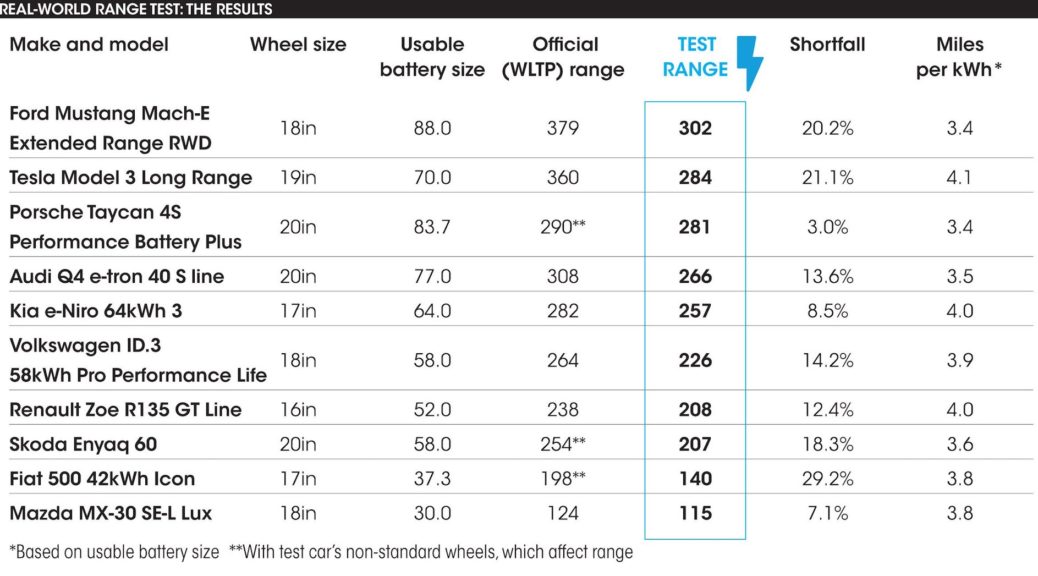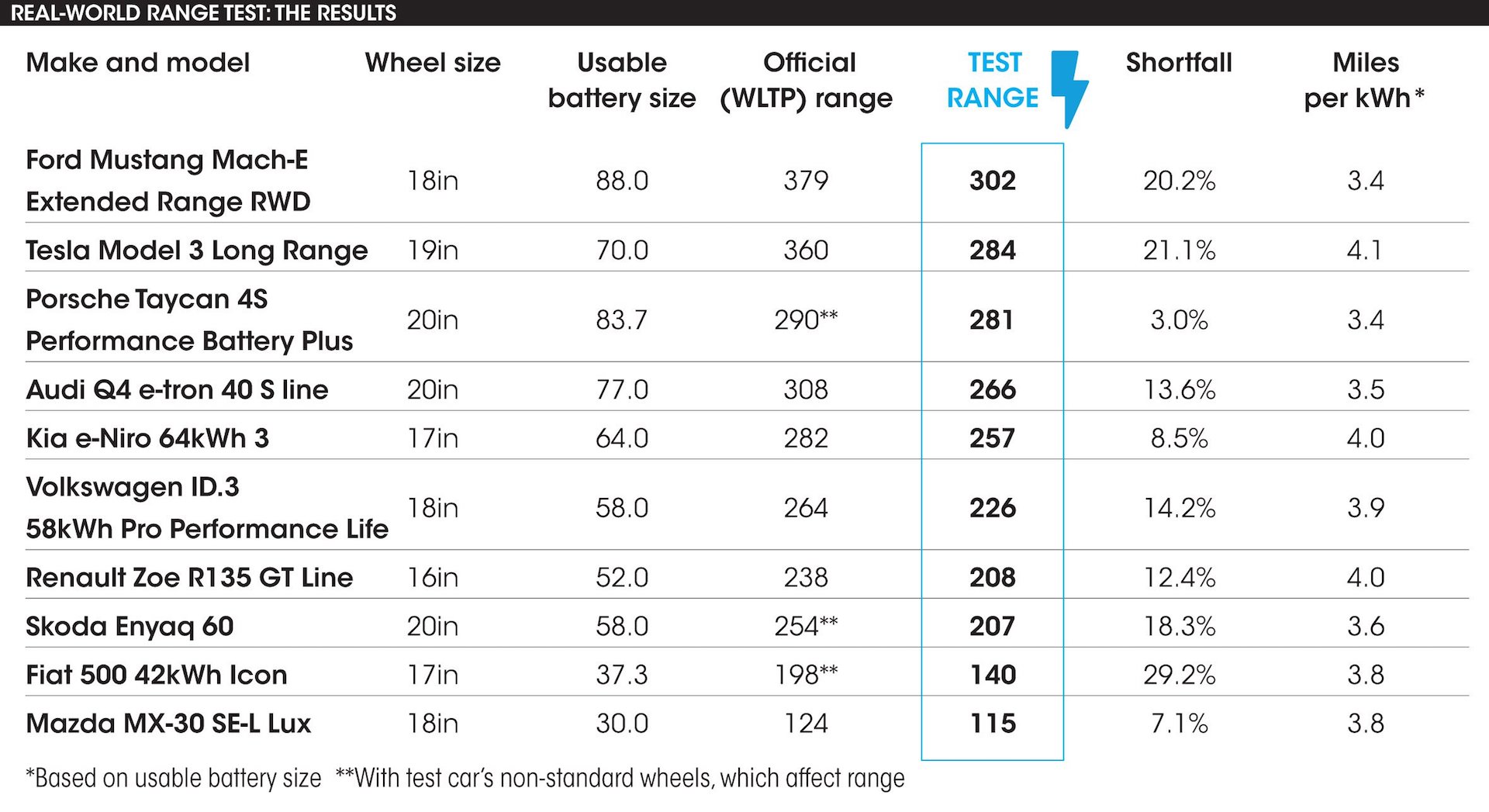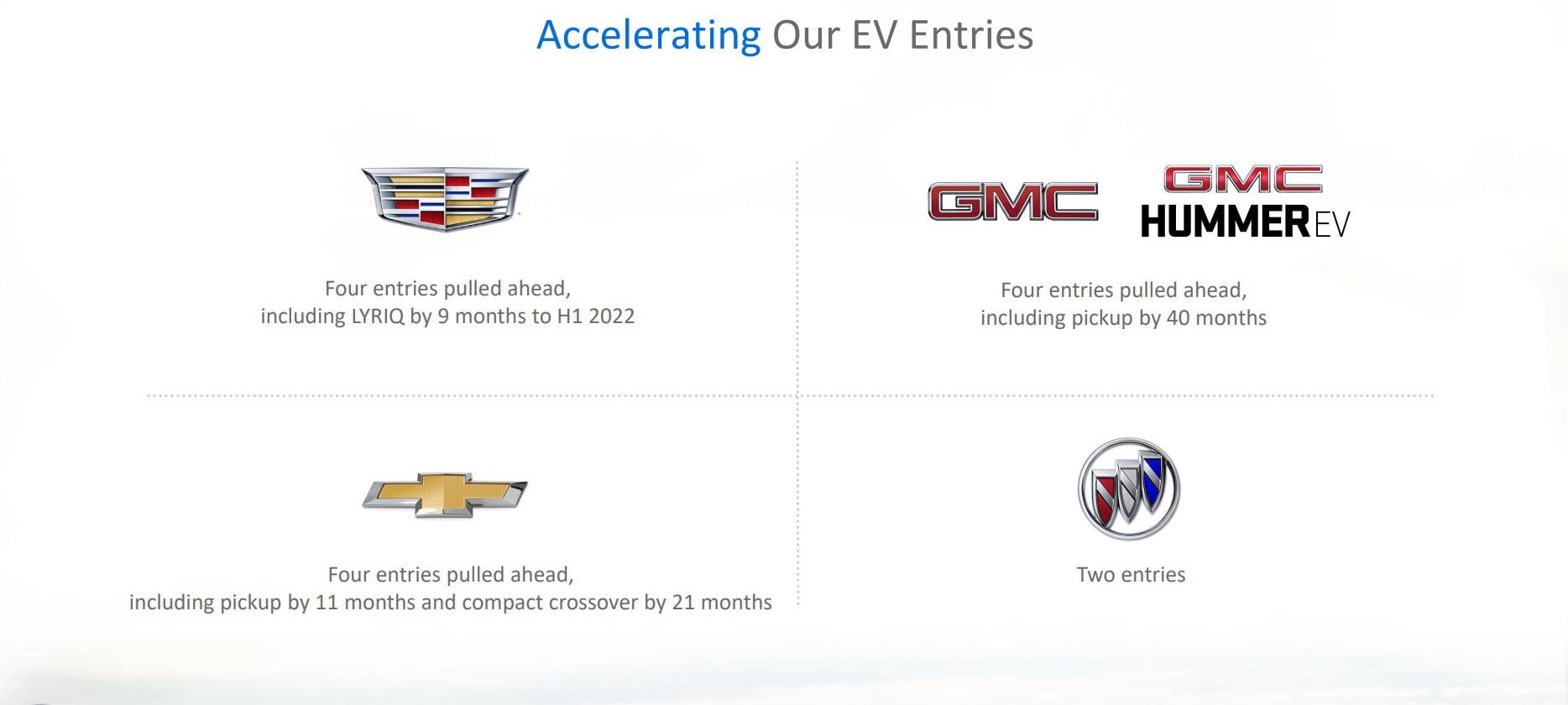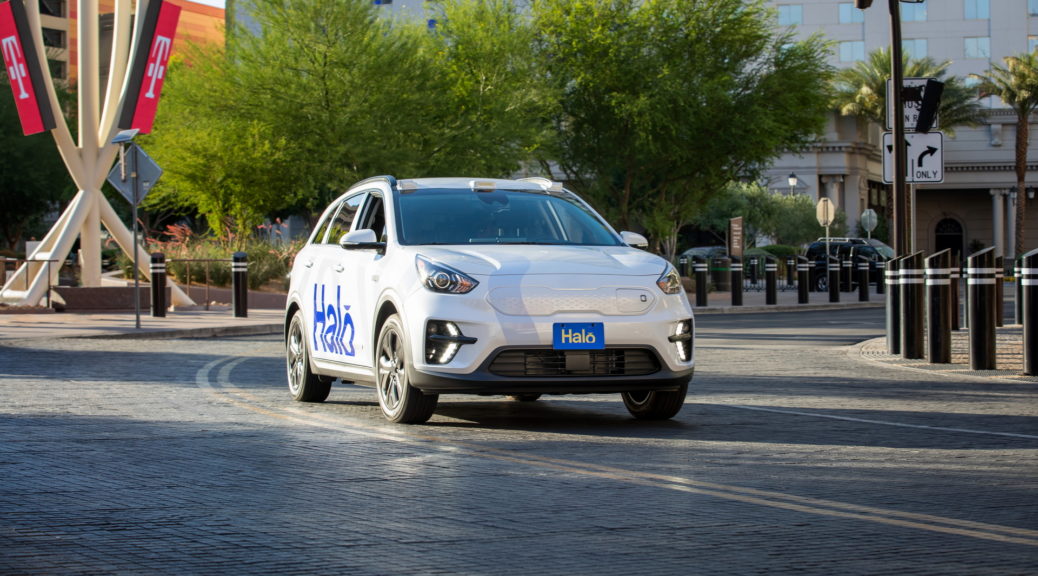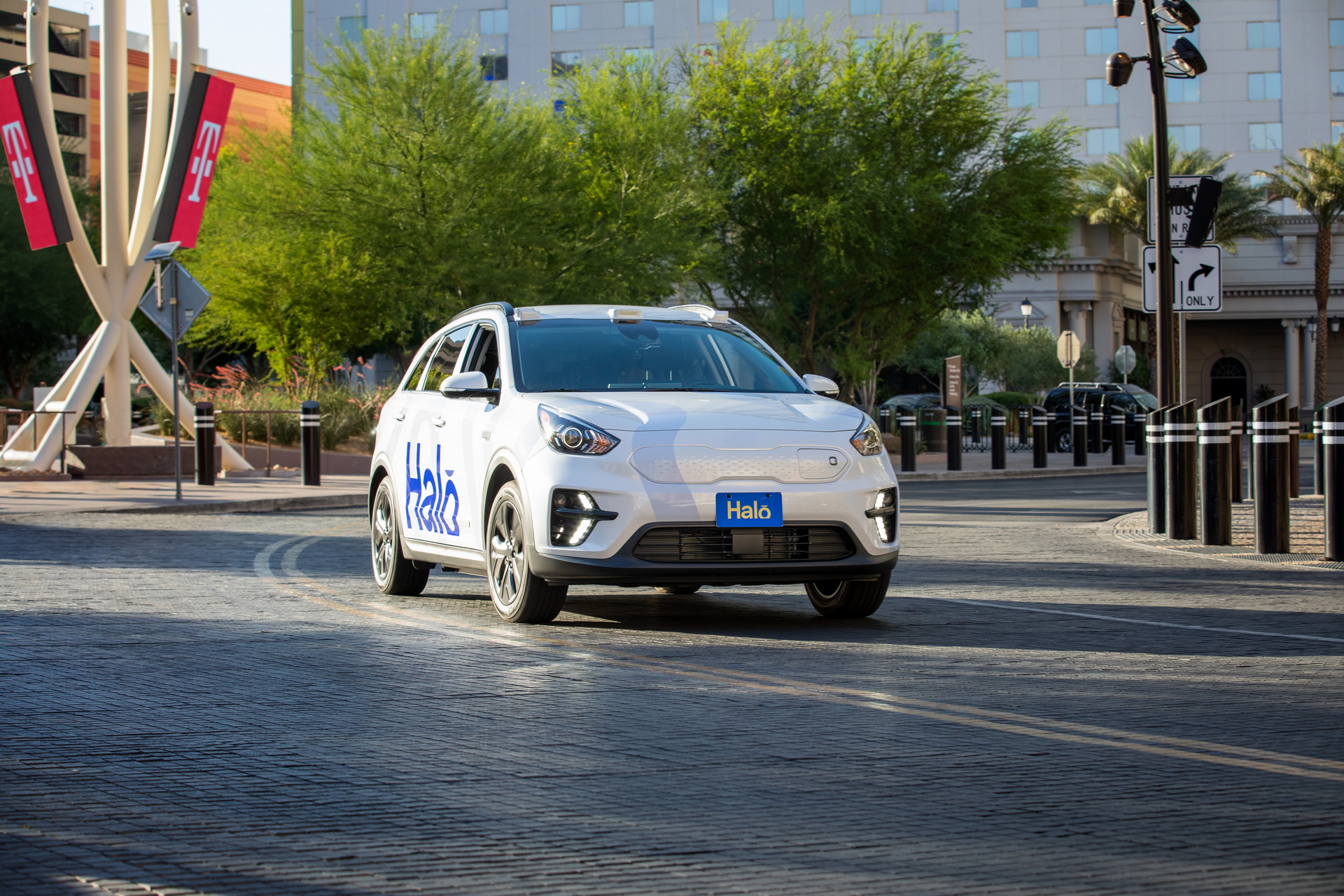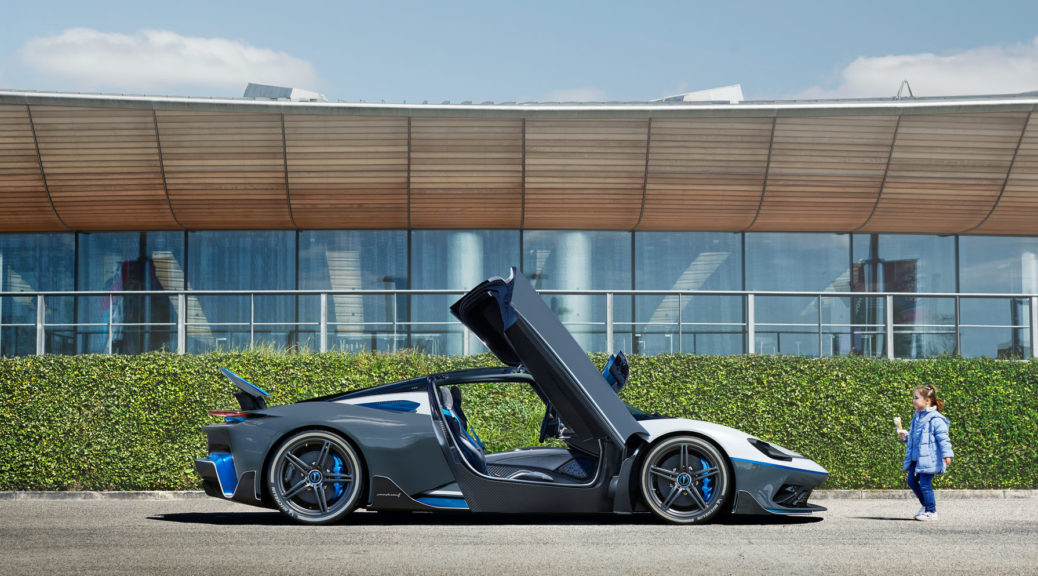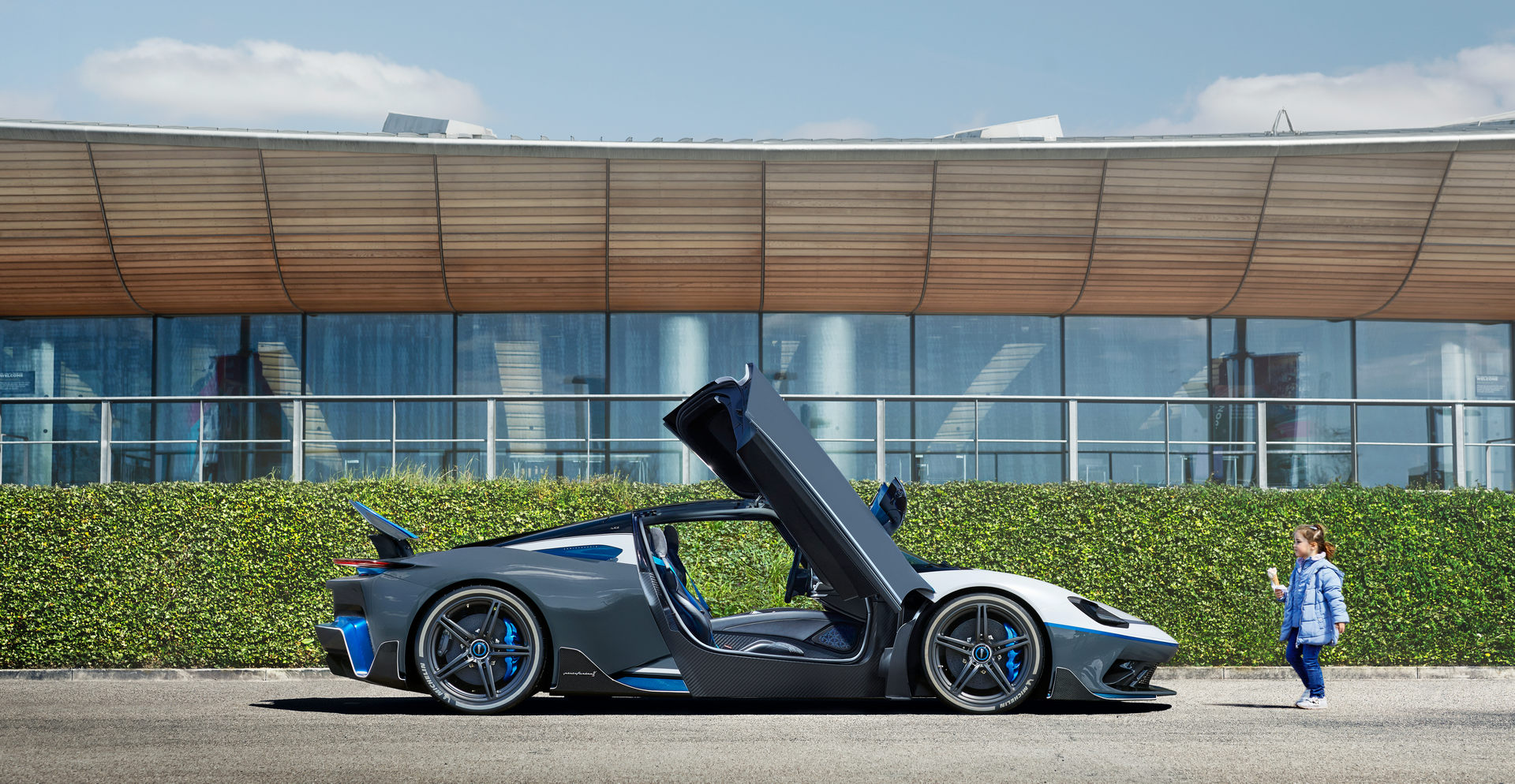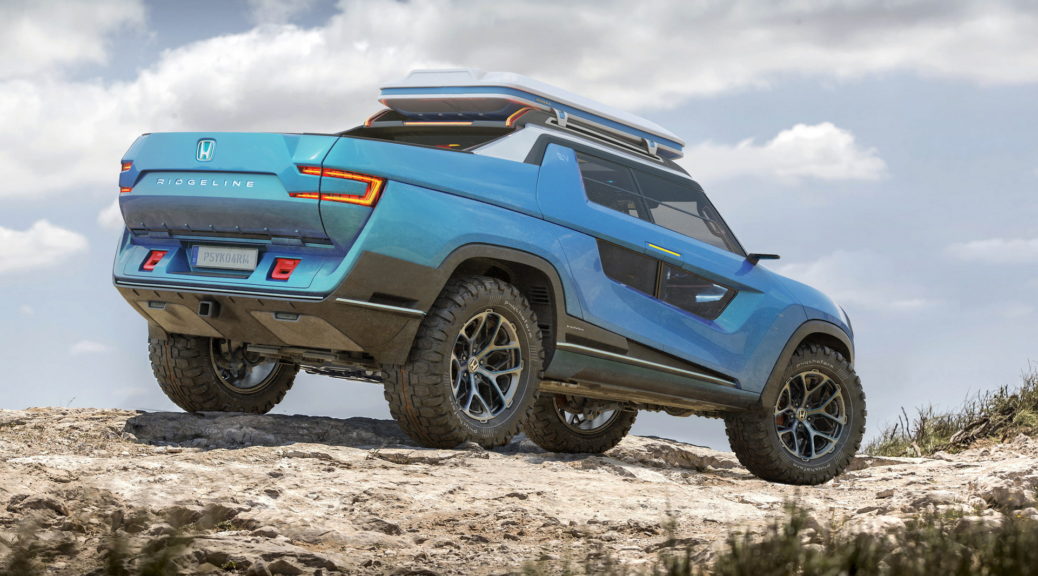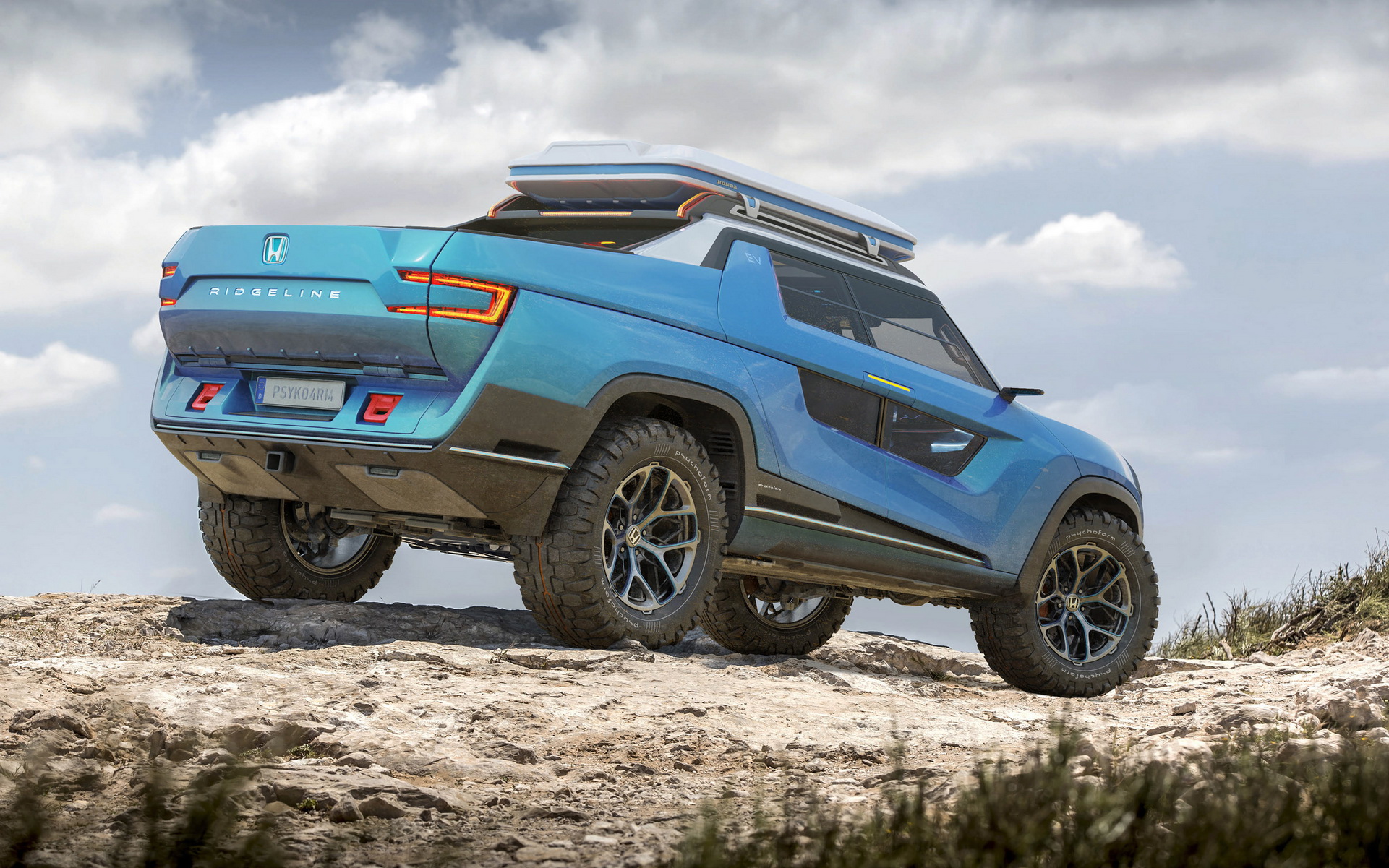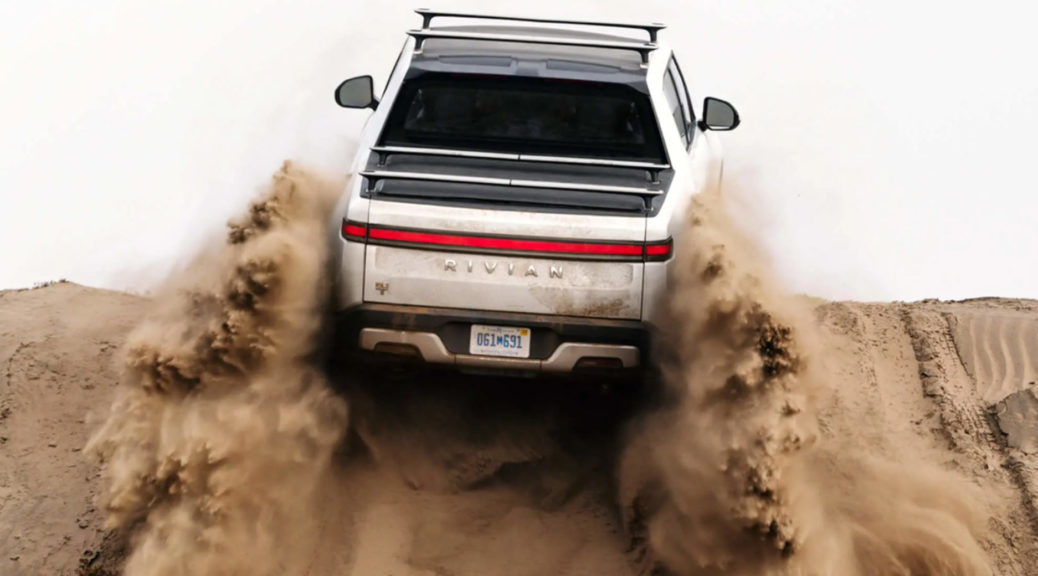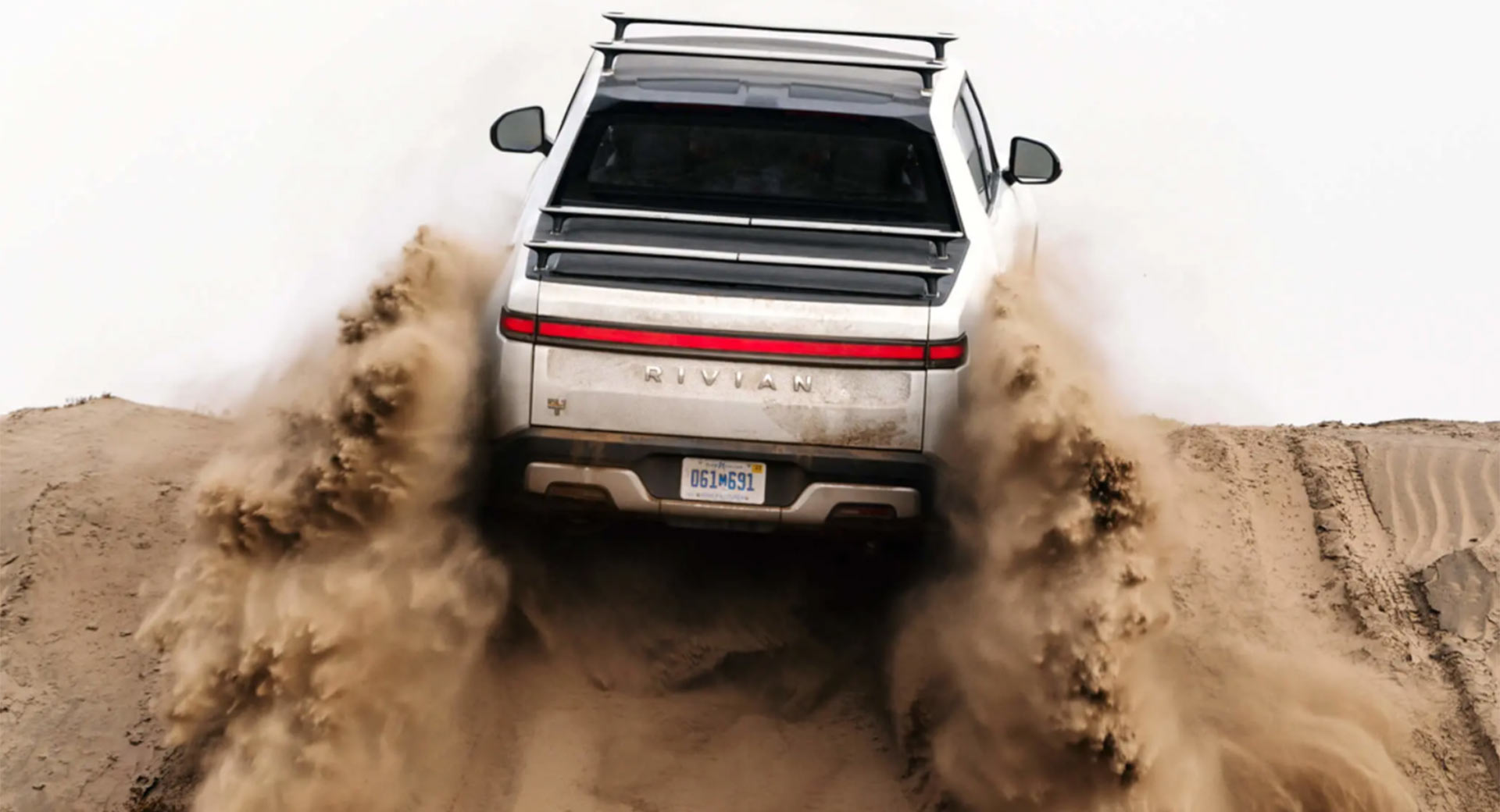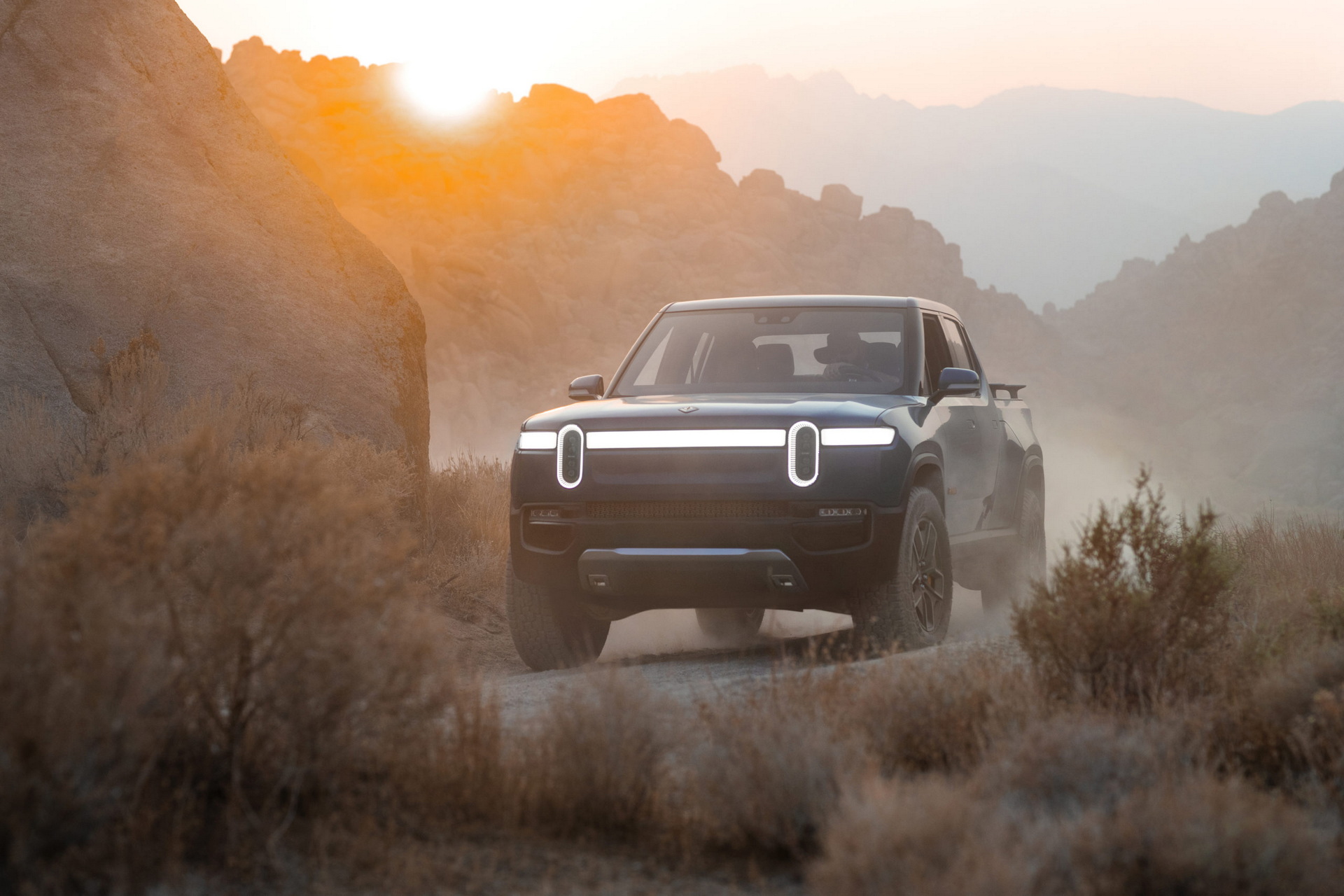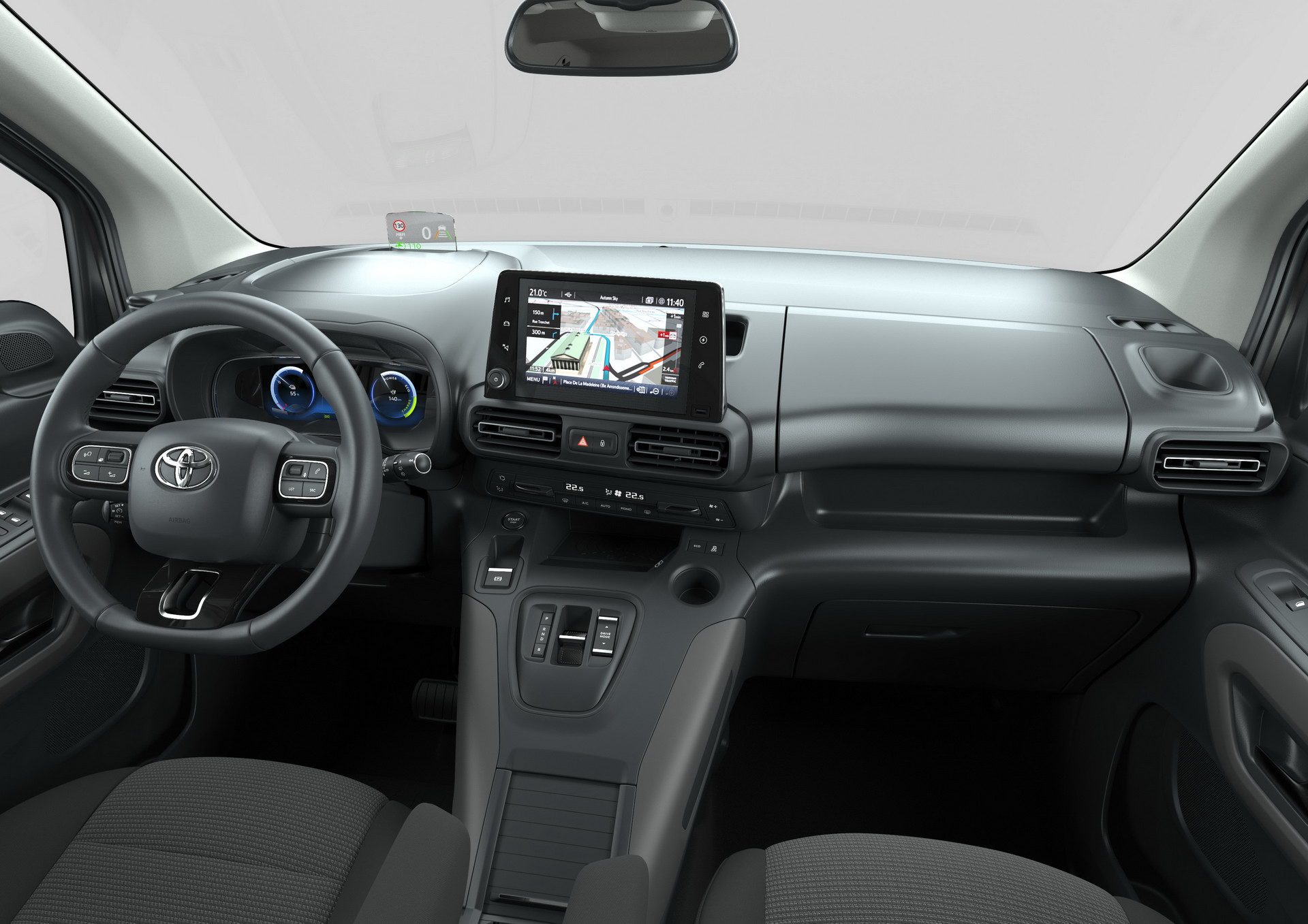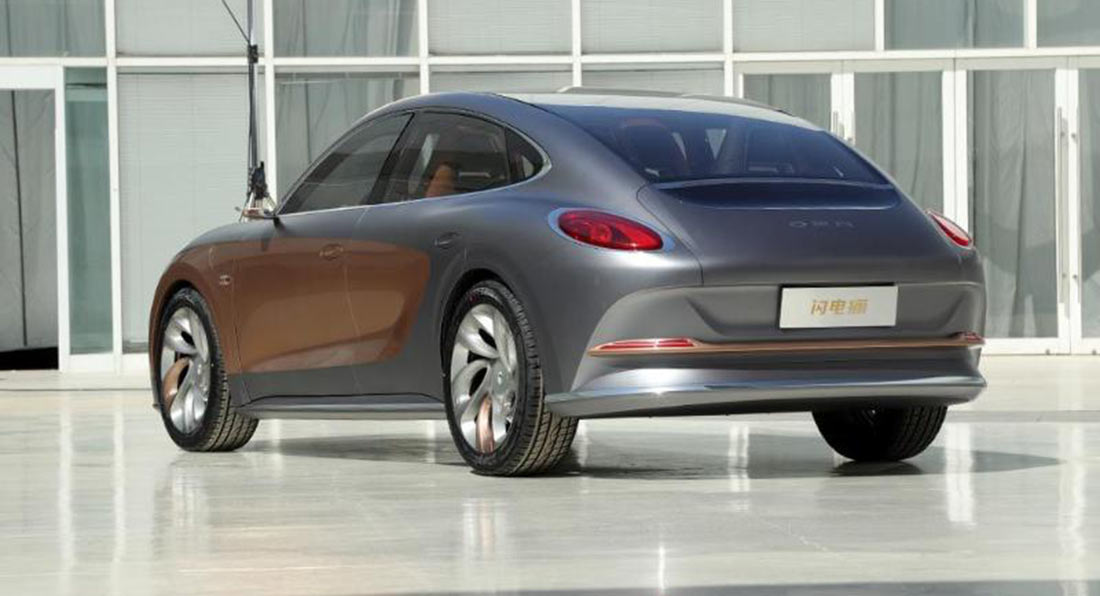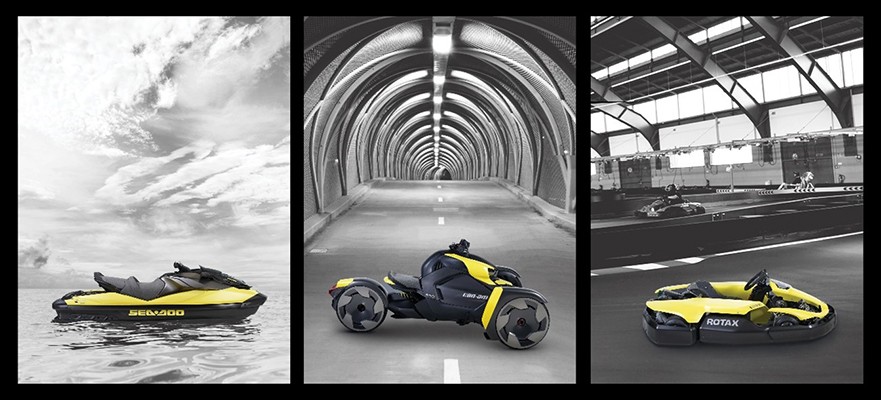Range anxiety is one of the biggest barriers to EV ownership, even though most modern electric cars can drive much further on a full charge than their ancestors could.
But as What Car? discovered, there’s a huge disparity between between current EVs in terms of how far they can travel, how that real-world range compares to the official range, and how efficient they are in terms of miles travelled per kWh of energy consumed.
To separate the EV champions from the also-rans, the Brit mag took 10 of the newest and most popular electric cars available in Europe, including the Mazda MX-30, VW ID.3, Kia e-Niro, Ford Mustang Mach-E, Audi Q4 e-tron and Tesla Model 3, and drove them until they died.
In the interests of safety and consistency they performed the test, not on the road, but at a former GM proving ground in Bedfordshire. Starting with a full charge, each car was repeatedly driven around a 15-mile loop that included 2.6 miles of simulated stop-start driving, four miles at 50mph and eight miles at 70mph.
Related: EPA-Rated Mustang Mach-E GT Range Beats Even Ford’s Estimates
[embedded content]
Unsurprisingly, given its tiny 35.5 kWh battery is the smallest of the bunch, the Mazda MX-30 gave up the ghost first, dropping out after just 115 miles (185 km). That’s against an official WLTP range of 124 miles (200 km). Although the car is coming to the U.S. there’s currently no EPA rating, but since EPA numbers are consistently more realistic than WLTP figures, you can guarantee it’ll be lower.
The new Fiat 500e EV was even more disappointing. It might have outlasted the Mazda, covering 140 miles (225 km) before keeling over, but Fiat says it can do 198 miles.
At the other end of the list the Tesla Model 3 Long Range proved the most efficient, achieving 4.1 miles per kWh, but could only manage 284 miles against a WLTP rating of 360 miles or 576 km (the EPA estimate is 353 miles). The Porsche Taycan 4S’s 281 miles (452 km) doesn’t sound that great until you consider its official rating, which is 290 WLTP miles and just 227 EPA (467 / 365 km respectively).
But the range king was the Ford Mustang Mach-E with the 88 kWh battery. It was the least efficient and couldn’t get close to Ford’s 379 WLTP claim, but its 302-mile (486 km) real-world rating almost perfectly tallies with the EPA’s 305-mile (491 km) figure. So if you’ve got range anxiety, get the Mustang.

